Wood grain. Most people have an image that comes to mind immediately when they hear that. But wood grain can actually be a very specific term that refers to how a board has been cut from a log. Flat sawn, rift sawn, and quarter sawn are all wood grains. Without getting too deep into the technical details of how those grains are created at the sawmill, it is important to know that each grain or “cut” looks very different on the face of a board. Moreover, different species will present different looks on their flat, rift and quartered faces.
Whether you know it or not, you’re familiar with the differences between flat and quarter sawn wood. Depending on your knowledge of wood, you may not have known what they’re called, but you are likely familiar with the cathedral patterns which are synonymous with flat sawn wood. You may also be aware of the straight lined grain and potential flecking of quarter sawn wood (and to some extent, riftsawn). What you may not be as familiar with, however, is how the cut impacts a finish you may choose to put on top. Depending on the species, the cut can affect the absorption of finish, and the finish can either enhance the grain pattern or cover it up in return.
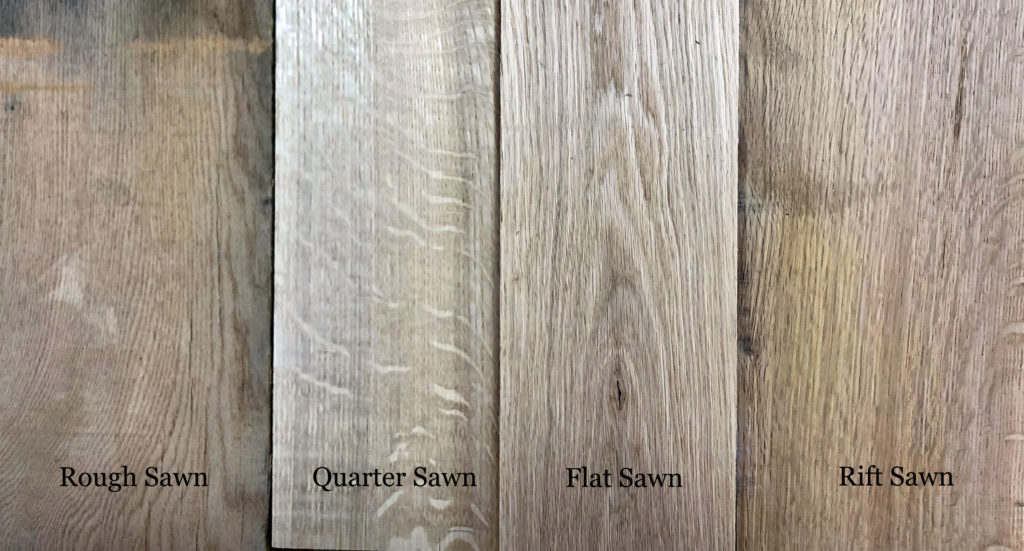
Transparent finishes and wood grain
To illustrate the finish differences from grain. Shown below are two products from our Alpha pre-finished cladding collections, and they perfectly illustrate how the cut impacts the overall look and finish. On the left is Potomac made from flat sawn Sapele, and on the right is Nantucket featuring quarter sawn Sapele. They utilize the exact same finish, a tinted wood stabilizer that brings out more of the natural red hue found in this species, and yet they are two completely different looks.
Despite using the exact same finish, look how different the final product is. Even though Potomac has a lightly wire brushed surface while Nantucket does not, the main factor creating such a strong difference between the two is their wood grain. In the case of these two looks below, however, the question you should be asking yourself is “cathedrals or ribbons?”—referring to the cathedrals visible in flat sawn wood and the ribbon effect found specifically in quarter sawn Sapele.
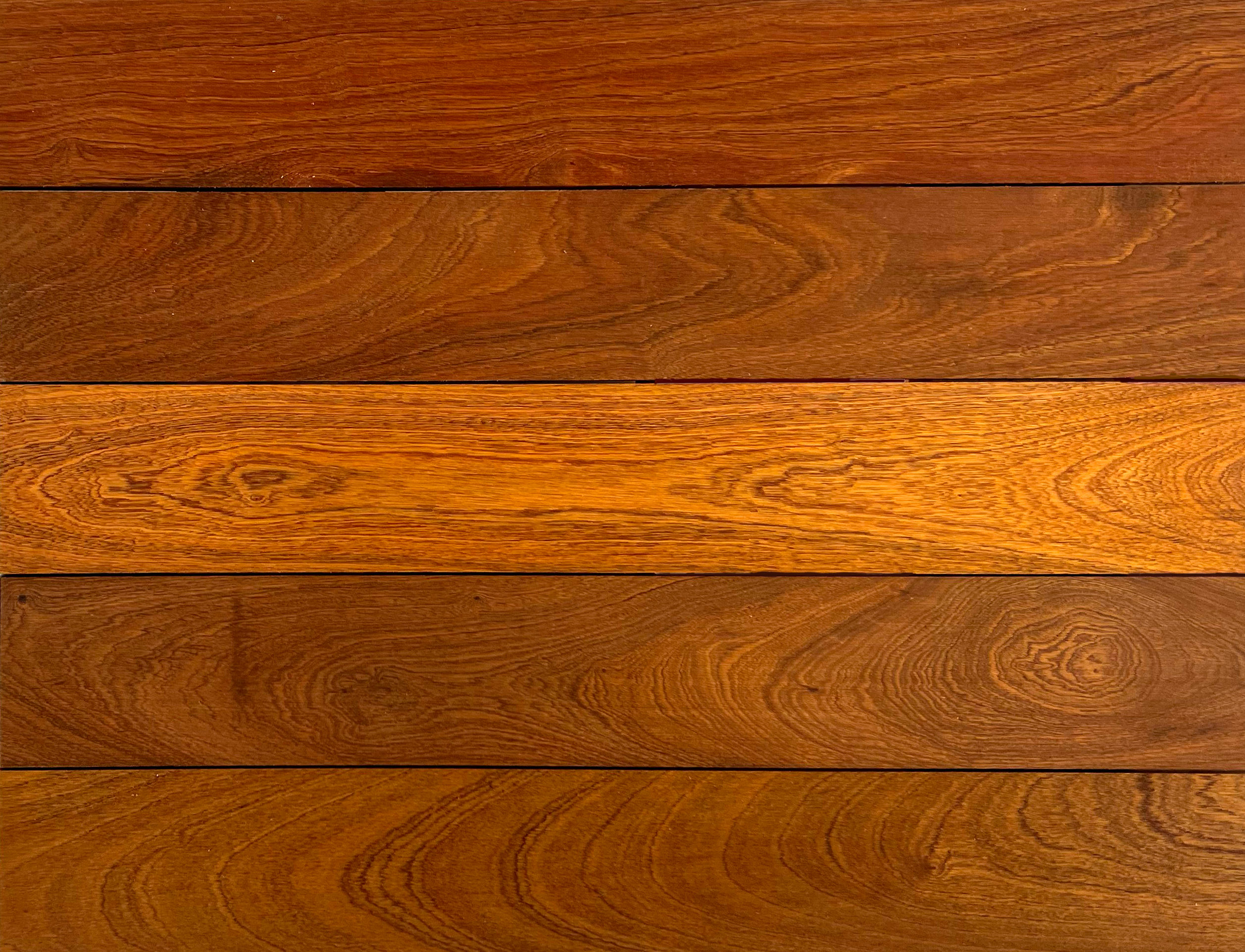
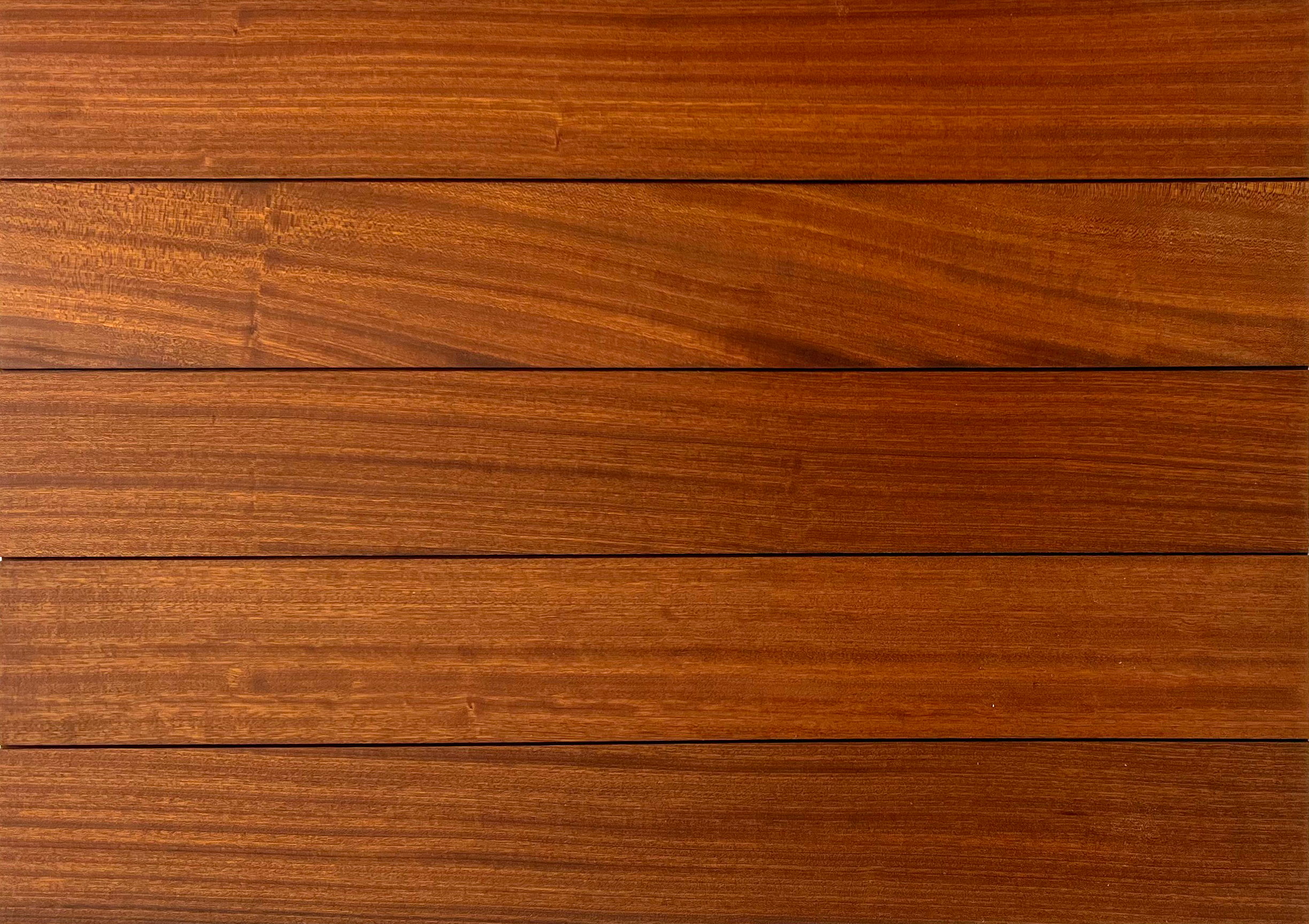
The Sapele example is a great representation of a more transparent finish being impacted by grain. With a finish like the tinted wood stabilizer seen above, the “grain through the stain” philosophy we developed Alpha under is obvious.
Solid Finishes and Wood Grain
What about more solid finishes? With a more opaque finish the straight grain of a rift or quartered board – especially in a denser species like Sapele – just comes off as boring and plain. It might not even look like wood. With more opacity we need the more obvious, almost stereotypical flat sawn wood grain pattern to show off the wood.
Look at the deeper colors used to create Mystic, Catalina, and Cape Cod shown below. What these three finishes have in common is their opacity—they are all semi-solid. These products also have one more very important attribute in common: they are specifically designated as flat sawn White Oak.
The Alpha development process began by casting quite a large net. We acquired many colors and opacities of finish as well as many sample boards of our six chosen species all in flat and quartered varieties. We tested as many combinations as we could to achieve the best possible finished looks, and the answer was obvious for many of our semi-solid finishes. These colors were too harsh against quartered sample boards. They covered up any semblance of grain pattern, leaving them looking flat, boring, and very much not like wood.
All of these colors needed one thing in common: a flat sawn, cathedral look. The unmistakable look of flat sawn White Oak with its prominent cathedrals really enhances the finish, making the color pop while still allowing the grain to show through.
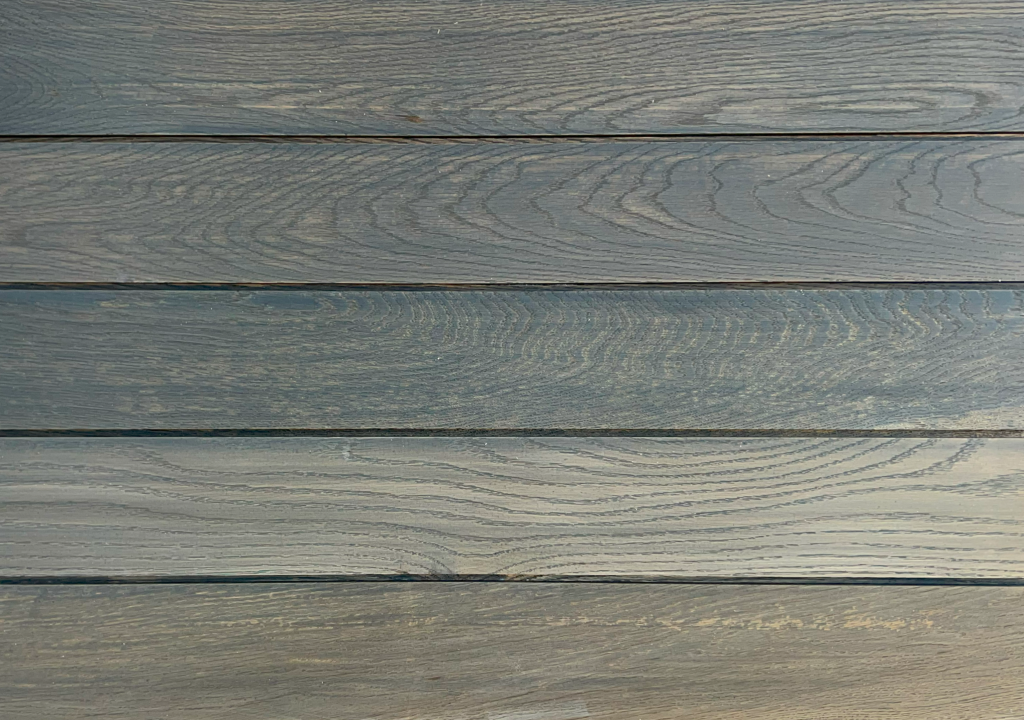
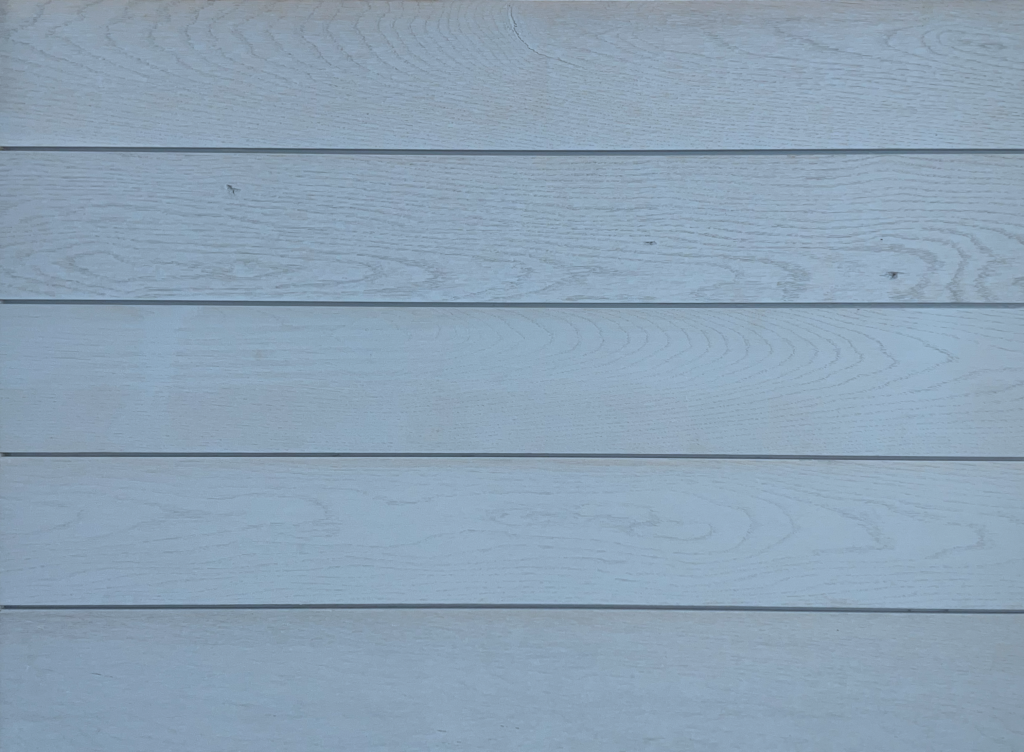
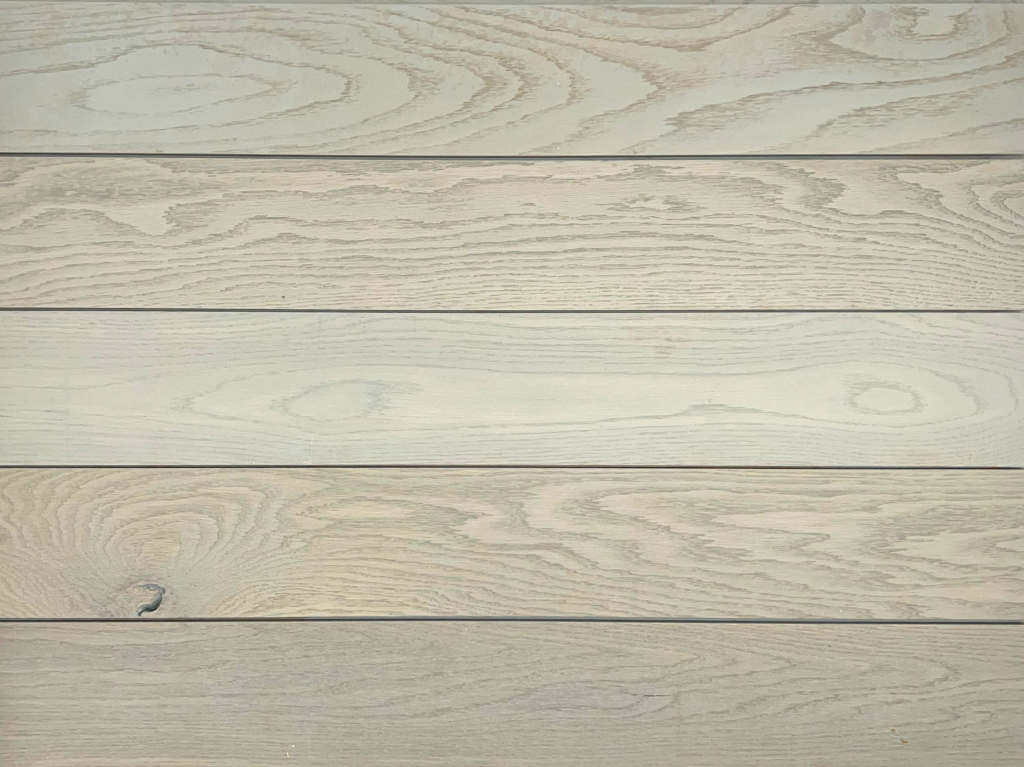
No matter your preference, we have a great deal of options available in both flat and quarter sawn varieties within our Alpha collections. The cut can emphasize the finish color and make the final look much more vibrant and interesting.
Check out the sample of Lexington where we played with the quarter sawn ray fleck of White Oak to create a different statement. Here the grain can contribute to a more rustic look. On the other side of the spectrum we can get a more contemporary look using a solid finish with a clean, straight grain that doesn’t interfere with the pigment like St. Croix.
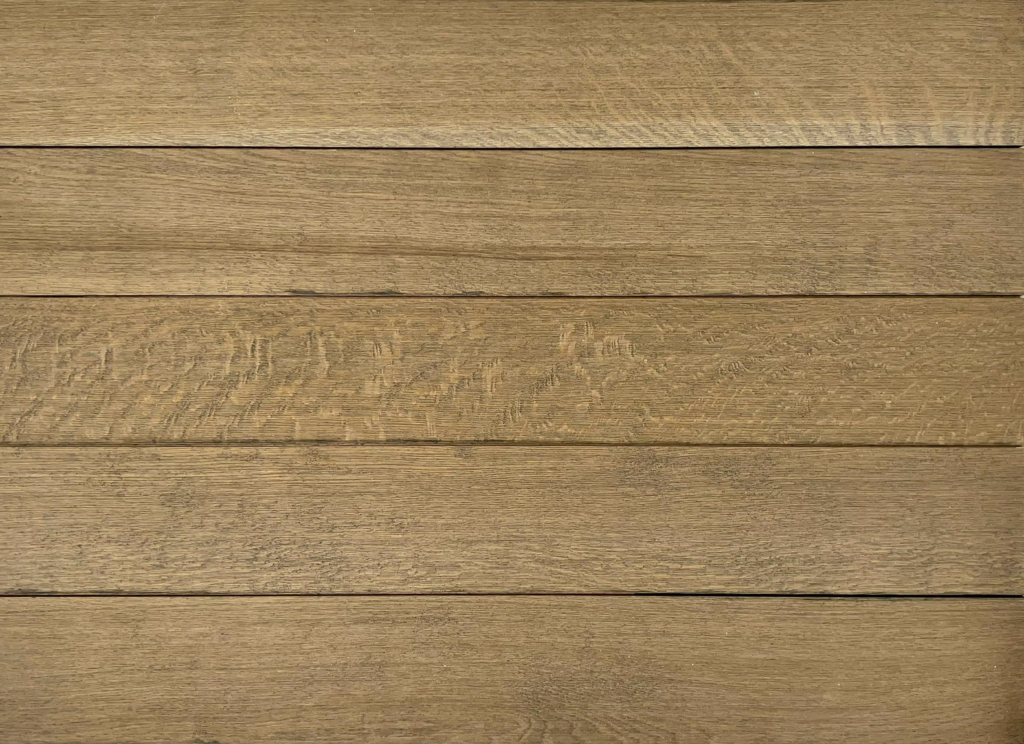
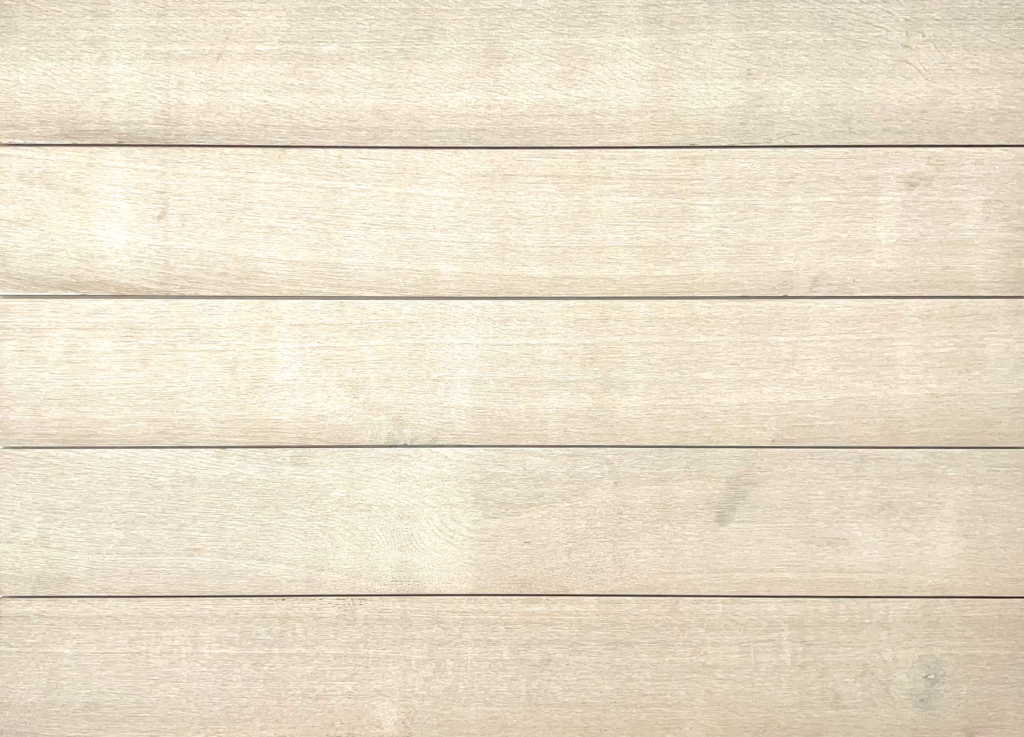
Can you start to see how wood grain can change the overall look of a finished product? Playing with the visible grain pattern contributes to the real wood look that is so integral to the Alpha brand, but playing with the visible grain pattern can also be used creatively to make design statements. These visual statement make a good design great that you have to see in person and examine from all angles.
Ready to compare some Alpha products in person? See for yourself how grain impacts the finished look by using the link below to request samples!

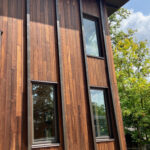
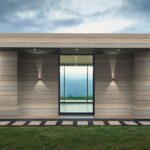
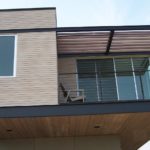
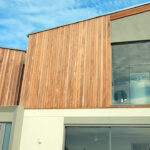
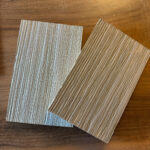
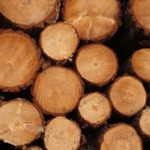


Leave a Reply